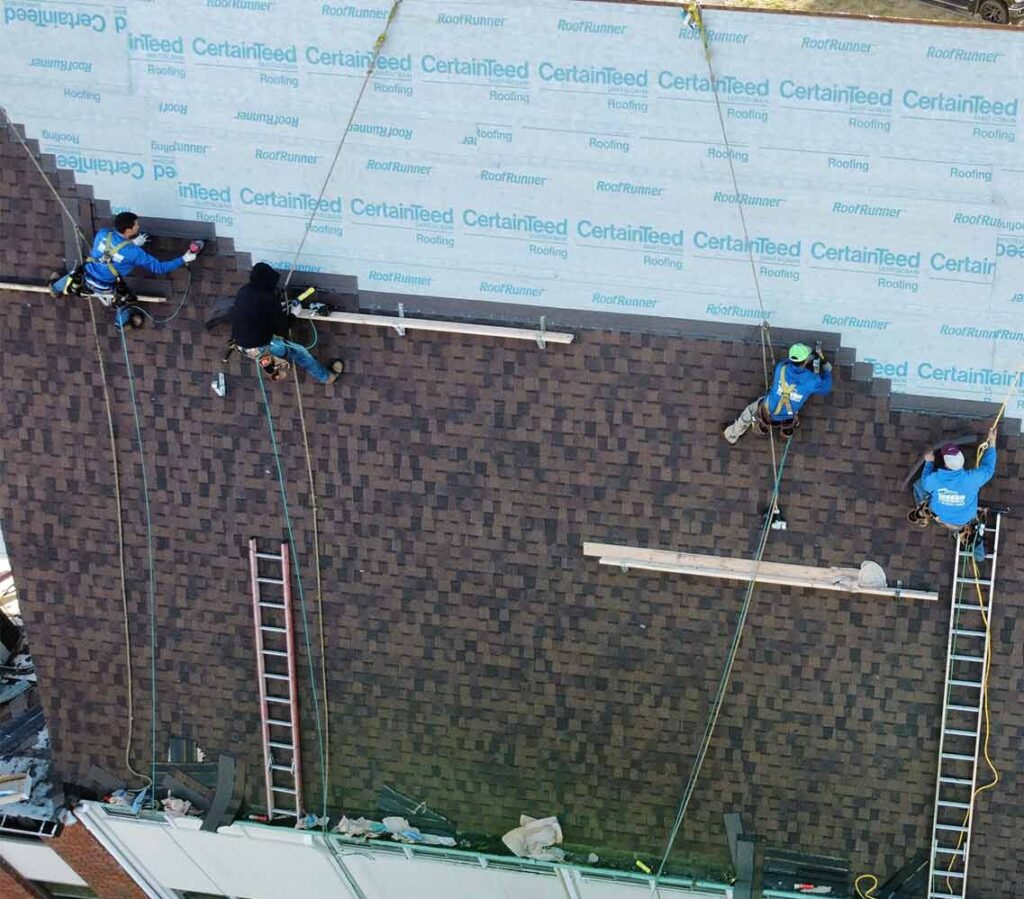Considering roof replacement, but you’re not sure where to start? Finding the right time of year can be daunting. The best time to replace a roof depends on various factors, including your location, climate, and personal preferences. Fall and spring are considered the best times to replace a roof for several reasons, particularly in regions with moderate climates. Here’s why:

1. Mild Weather Conditions:
- Fall and spring typically offer mild and stable weather conditions in many areas. Temperatures are often moderate, which is ideal for roofing work. Extreme heat or cold can affect the performance of roofing materials, making it harder to install them correctly.
2. Lower Humidity:
- High humidity can affect the adhesion of roofing materials and may lead to issues like buckling or warping. Fall and spring tend to have lower humidity levels compared to the summer months, reducing the risk of such problems.
3. Less Extreme Temperatures:
- Extreme temperatures, whether hot or cold, can affect the flexibility and integrity of roofing materials. In the summer, asphalt shingles, for example, can become too soft, while in the winter, they can become brittle. Spring and fall offer a more balanced temperature range.
4. More Predictable Weather:
- While no season is entirely immune to weather surprises, fall and spring tend to have more predictable weather patterns compared to the winter and summer. This predictability is crucial for scheduling and completing a roofing project without unexpected delays.
5. Extended Daylight Hours:
- Fall and spring provide longer daylight hours, which means roofing crews have more time to work on your project each day. This can lead to a faster completion time and less disruption to your daily routine.
6. Preparation for Seasonal Changes:
- Replacing a roof in the fall can help prepare your home for the winter months, ensuring that it’s well-protected against rain, snow, and ice. Similarly, a spring roof replacement readies your home for the warmer, potentially stormy summer months.
7. Contractor Availability:
- Roofing contractors tend to be less busy during the fall and spring, which can lead to more flexibility in scheduling and potentially lower costs. It’s often easier to secure an appointment that works for you during these seasons.
8. Minimal Interruption to Comfort:
- Extreme heat in the summer and cold in the winter can make it uncomfortable to be in your home while the roof is being replaced. Fall and spring offer more pleasant temperatures, making it easier for you to stay in your home during the project.
While fall and spring are generally favorable for roof replacements, it’s essential to consider your specific location and local climate. In regions with severe winters or very hot summers, the ideal timing might vary. Consulting with a local roofing professional is the best way to determine the most suitable time for your roof replacement project, taking into account local weather patterns and conditions.
